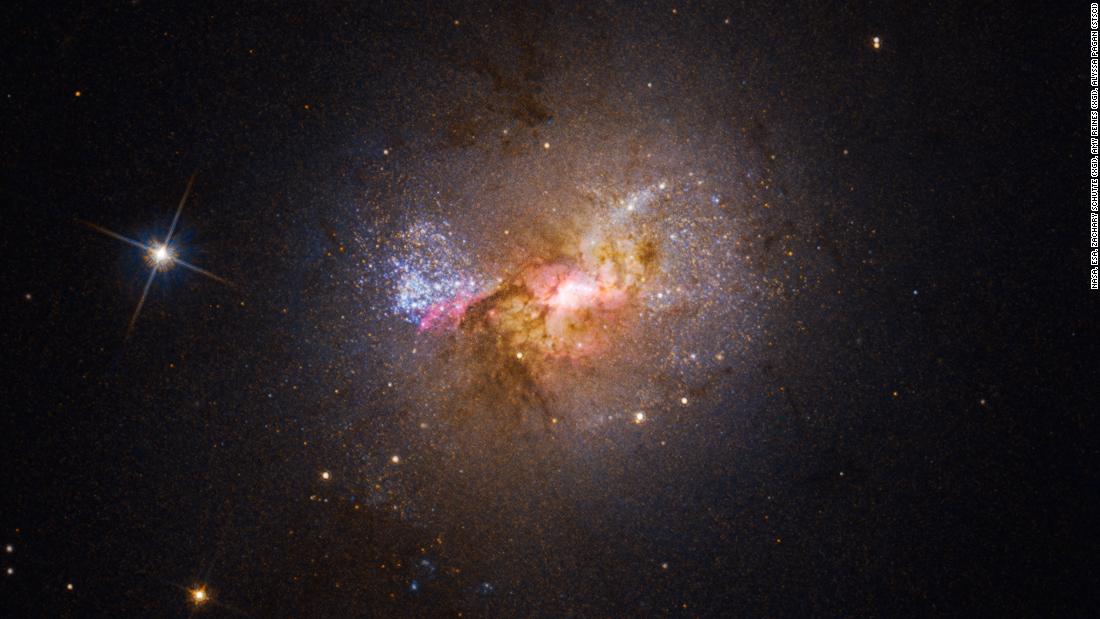It's a one-of-a-kind black hole, see why 0:37
(CNN) --
Black holes are best known for shredding stars, gobbling up light and acting as massive garbage disposals in space.
In a twist, astronomers using the Hubble Space Telescope discovered that these energetic celestial objects also have a nutritional side.
Hubble's observation of a dwarf starburst galaxy, called Henize 2-10, revealed a gaseous umbilical cord stretching from a black hole at the galaxy's center to a stellar nursery where stars are born.
A dwarf starburst galaxy is a small galaxy with an intense amount of star formation.
Star birth requires a dense cloud of gas and dust.
The stream of gas provided by the black hole actually set off a fireworks display of star birth when it interacted with the cloud, leading to a cluster of stars forming.
The galaxy is located 30 million light-years away in the Pyxis constellation.
While large galaxies are known to contain a supermassive black hole at their center, galaxies like Henize 2-10 have caused astronomers to debate whether the same is possible in smaller-scale cosmic settings.
advertising
Compared to the massive Milky Way galaxy and its billions of stars, Henize 2-10 only has about a tenth as many stars.
"I knew from the start that something unusual and special was happening at Henize 2-10, and now Hubble has provided a very clear picture of the connection between the black hole and a neighboring star-forming region located 230 light-years from the black hole." said study author Amy Reines, an assistant professor in the physics department at Montana State University, in a statement.
The findings were published Wednesday in the journal Nature.
As a graduate student, Reines also co-authored a 2011 study that revealed the first evidence of a black hole in the galaxy.
The black hole's gas output was moving about a million miles per hour when it smashed into the dense cloud of gas and then spread out.
New star clusters can be seen blooming along its path.
This Hubble Space Telescope image shows the Henize 2-10 dwarf galaxy, which is full of young stars.
The bright center, surrounded by pink clouds, indicates the location of its black hole and star birth areas.
It's a rare case of a black hole helping stars form, rather than tearing them apart.
In large galaxies, black holes spew out jets of superheated material that nearly reach the speed of light.
Any gas cloud unlucky enough to get in the way of these jets would become so hot that it couldn't cool enough to form stars.
The smaller black hole inside the Henize 2-10 dwarf galaxy is shedding material at a much slower and gentler rate, creating the right conditions for star birth.
Studying dwarf galaxies, or those that have remained small over time, could help astronomers discover how supermassive black holes came to exist early in the history of the universe.

